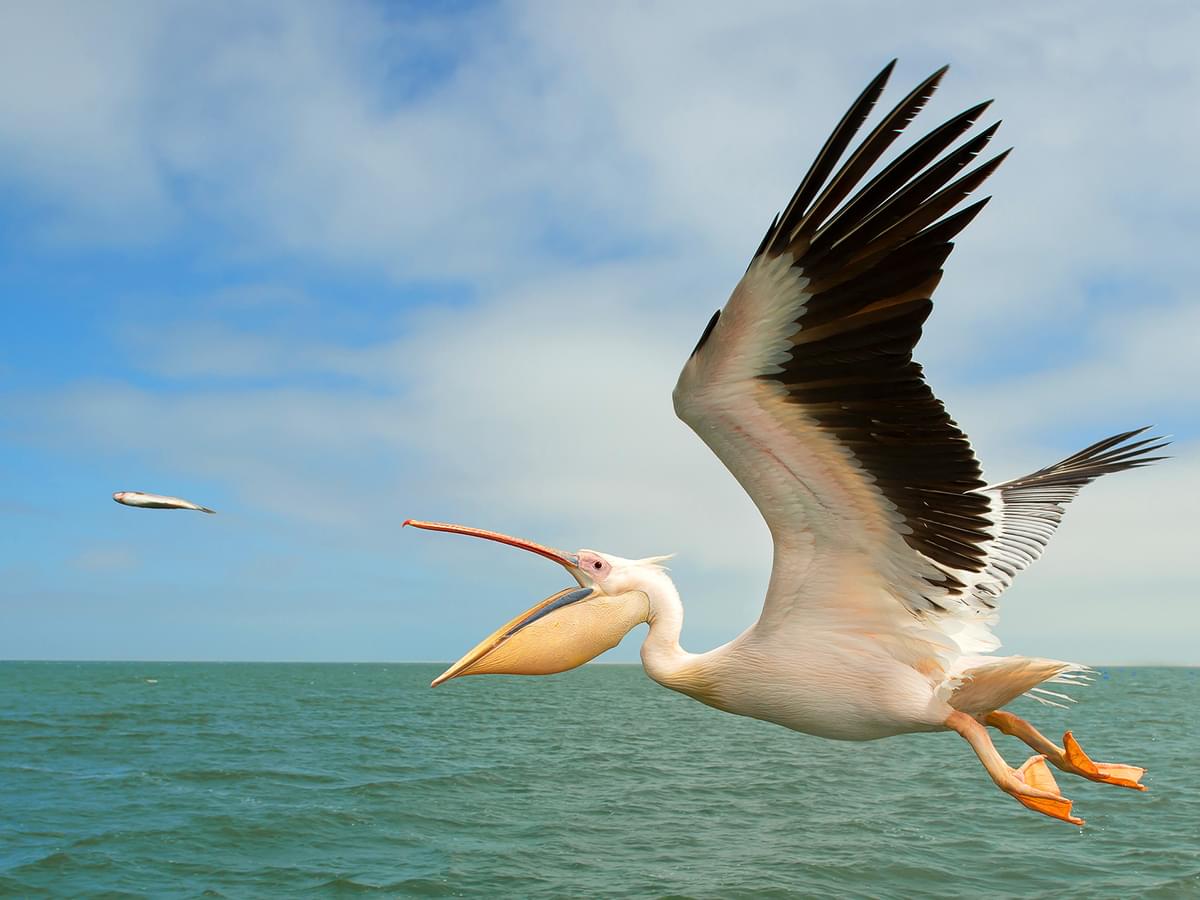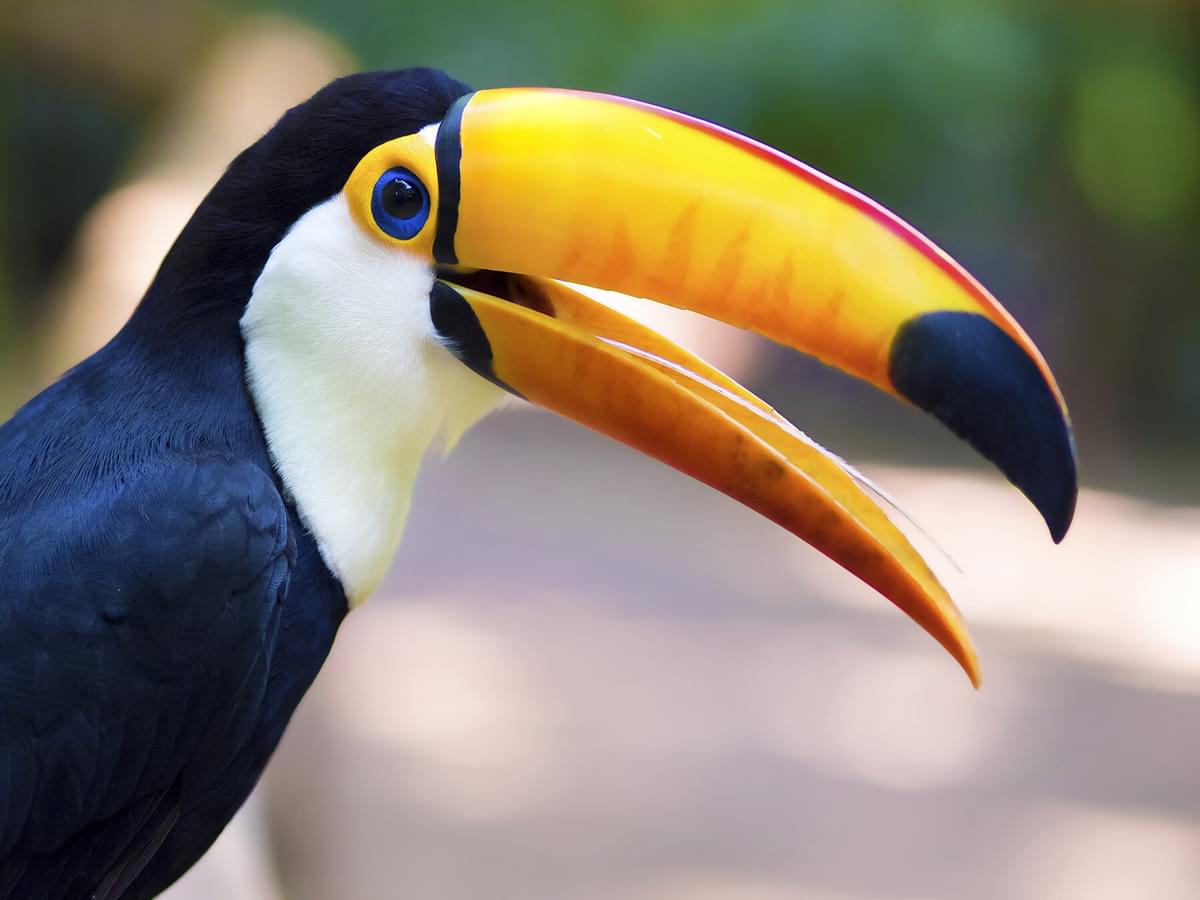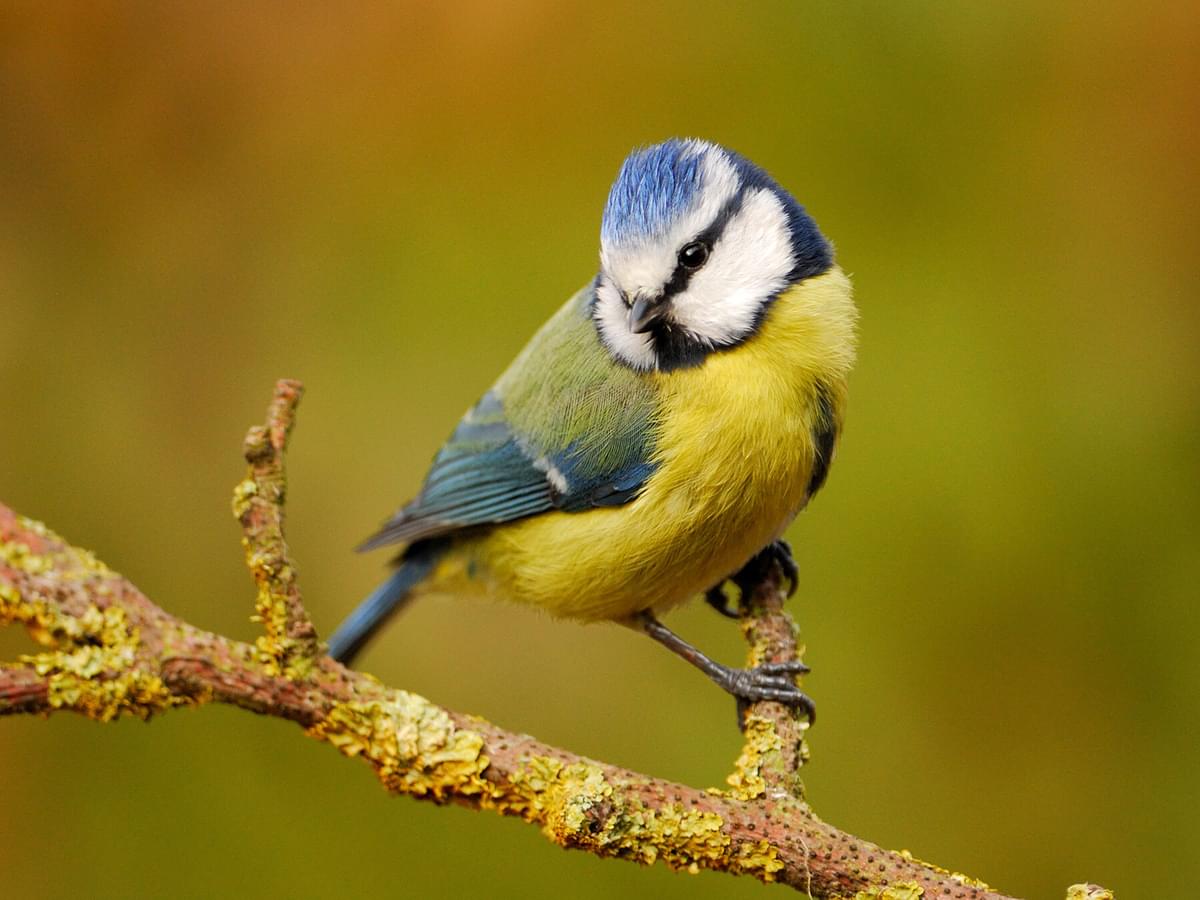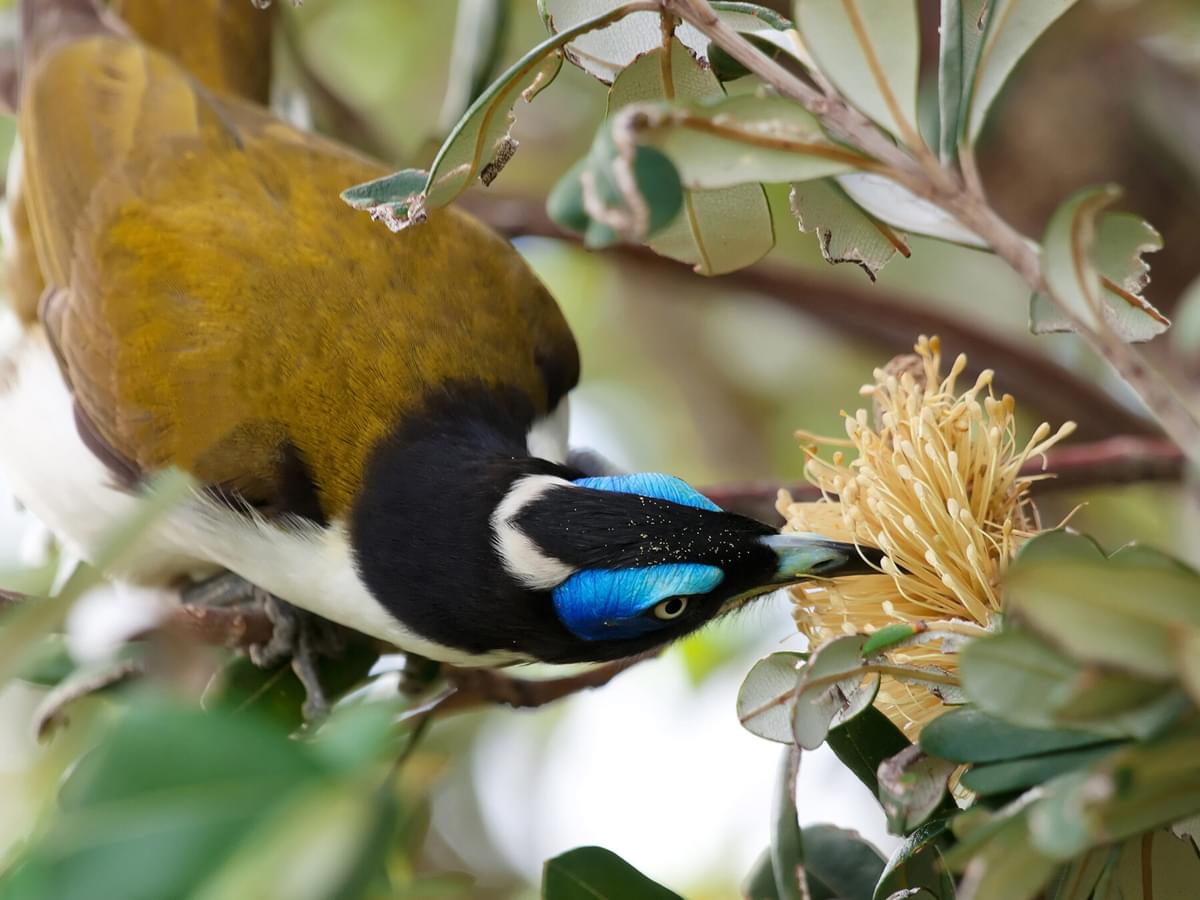Foraging Techniques

The Quest for Sustenance
From harsh deserts to frozen oceans, each natural ecosystem offers life-giving sustenance for the birds that know how to survive there. Avians have evolved an impressive variety of physical adaptations to exploit natural food sources, but they still rely on instinctual and learned behaviors to put their bodies to good use.
Some birds thrive by being ‘jacks of all trades’ and exploiting a variety of food sources in various habitats. In contrast, many are remarkably specialized, with unique anatomy and foraging techniques to match.
In this guide, we’ll uncover some typical bird foraging behaviors and their importance for both birds and the ecosystems they call home. Read along to learn more about the fascinating ways birds find food!

The Greater Roadrunner (pictured) is a desert-dwelling bird and can run up to speeds of 42 km/h (26 mph)
Understanding Foraging
What is Foraging?
Foraging simply describes the behaviors birds use while searching for food and then capturing or accessing it. Actual feeding covers a varying percentage of their total foraging time, and it depends on factors like the energy content of the food source and how easily accessible it is.
A grazing Snow Goose, for example, may spend over 12 hours a day feeding on low-energy vegetation, while a Golden Eagle may go two or more days between hunting when large prey is available.
So why study bird foraging behavior?
More than just an interesting behavior to observe, learning how birds forage gives us a better understanding of how they interact with their ecosystem and the other plant and animal species that share it. It is an important subject to study because it affects everything from bird species' survival to ecosystem functioning and even our own food security!
Continue reading to learn about some typical bird foraging strategies.

Snow Geese may spend over 12 hours a day feeding on low-energy vegetation
Ground Foragers
Many birds find their food on the ground or just above or below it. These ground-foraging birds include carnivores that feed on small terrestrial animals, herbivores that feed on seeds, grass, and other plant matter, and omnivores with more flexible diets.
Ground foragers generally have well-developed legs, and many are fast runners like Pheasants and Ostriches. However, small songbirds like House Sparrows that forage on the ground prefer to hop, and some ground-feeding woodpeckers like Northern flickers and Green Woodpeckers are not particularly agile on foot.
Bill shape varies greatly among the various species and families, depending on their diet and foraging techniques. Many seed-eating passerines have heavy conical bills, while doves and pigeons have fine beaks for collecting small food items.
Birds like Curlews and Ibises that catch worms and other invertebrates have very long, curved bills to probe the mud, while songbirds like Thrushes and American Robins use their sharp, straight beaks to catch small prey between leaf litter, grass, or just under the soil’s surface.

Pictured: A White Ibis. Birds like Curlews and Ibises that catch worms and other invertebrates have very long, curved bills to probe the mud
Aerial Foragers
Flying insects are a staple food source for many bird species, although catching them consistently requires some pretty specialized adaptations and behaviors. Outside of the tropics, flying insects tend to be a highly seasonal food source, so many aerial foragers are migratory birds.
The Swallows, Swifts, and Martins are extremely accomplished aerial hunters with a body plan evolved for efficient and agile flight. These birds have weakly developed legs and, in the case of Swifts, rarely ever touch the ground.
Many aerial foragers hunt from a perch by waiting for an insect to fly past and then sallying out to catch it in mid-air. Flycatchers, Bee-eaters, and Kingbirds are good examples of these more sedentary hunters.
Catching small flying insects requires well-developed eyesight and extreme maneuverability, but these birds also have a wide beak gape to improve their catch rate, kind of like a baseball catcher's mitt. However, not all aerial foragers hunt small insects, and not all of them catch prey with their mouths.
Many birds of prey use superior speed, maneuverability, and the element of surprise to hunt other birds in flight. Falcons and Accipiters such as the Sparrowhawk and Cooper’s Hawk are classic examples of aerial hunting raptors that catch or strike their prey with their feet.

A Bee-eater. Many aerial foragers hunt from a perch by waiting for an insect to fly past and then sallying out to catch it in mid-air
Water-Based Foragers
Waterbodies provide rich and varied feeding opportunities for a great diversity of birds. However, accessing these food sources usually requires the ability to swim or even dive into the water from the sky above.
Freshwater bodies are often rich in vegetation and invertebrates, both at and below the surface. Wildfowl and waterbirds like Swans, Ducks, and Coots access this food source by swimming and foraging on the surface, upending or reaching down in shallow water, or diving down to reach submerged growth.
Water also provides rich hunting grounds for fish-eating birds that have evolved numerous ways to catch their prey. Wading birds like Great Blue Herons catch their prey in shallow water by striking from a standing position, while birds like Kingfishers, Ospreys, and Gannets catch fish near the surface by diving into the water.
Many birds have evolved to be excellent swimmers, capable of moving at high speed below the surface to pursue their prey. They may propel themselves with large webbed feet in the case of Loons and Cormorants or ‘fly’ through the water in the case of Penguins and Guillemots.

A Gentoo Penguin. Many birds have evolved to be excellent swimmers, capable of moving at high speed below the surface to pursue their prey
Adaptations for Foraging
Beak Specializations
You can tell a lot about a bird's foraging behavior by the size and shape of its beak. With about ten thousand bird species on the earth, bird bills have evolved into a remarkable range of fascinating and sometimes comical shapes!
The bird beak is a wonderfully adapted tool used for everything from hygiene to specialized feeding and foraging techniques. Foraging birds may use their bills to manipulate their environment, like a Woodpecker drilling into wood, to manipulate their food, like a Crossbill extracting spruce seeds, or to capture their prey like the nocturnal Nightjars and Poorwills.
Examples of unique bird beaks
- The massive bill of the Shoebill Stork
- The extremely long and curved bills of Curlews and Whimbrels
- The powerful crushing bills of the Grosbeaks
- The chisel-like bills of Sapsuckers and Woodpeckers
- The shovel-shaped bills of Wildfowl
- The sensitive flattened bill tip of the Spoonbill
Sensory Adaptations
Birds rely on these keen senses to locate and capture their food while foraging:
Vision
Eyesight is particularly well developed in birds, with specializations like the ability to seeds and fruit in UV light, head-bobbing behaviors that stabilize their vision, and excellent low-light vision in nocturnal birds like Owls and Nightjars.
Hearing
Hearing is also extremely important for many foraging birds as it allows them to detect prey that would be otherwise invisible. Woodpeckers are thought to hear their prey moving within dead wood, while Owls can detect their prey in complete darkness or even catch rodents moving beneath the snow. There is also evidence that diving waterbirds have ears adapted for hearing their prey under the water.
Touch
Some birds also have highly developed tactile senses in their beaks to detect prey or food in situations where sight and hearing are ineffective. Filter-feeding Ducks, for example, can separate food from inedible matter within their bills while probing birds like Ibises and Kiwis have a special bill tip organ that can detect the presence of underground prey near the beak.
Smell
Although less developed than vision and hearing, some birds also use smell when foraging. Several seabirds have been shown to detect food by smell, and Turkey Vultures can detect animal carcasses at a distance of several meters.

Pictured: A Roseate Spoonbill. You can tell a lot about a bird's foraging behavior by the size and shape of its beak
Impact of Foraging Behavior on Ecosystems
Ecological Roles of Birds
Birds are numerous in almost all habitats, and their foraging behaviors are integral to ecosystem functioning. Let’s take a look at a few examples of their ecological impacts.
- Birds pollinate flowers while foraging for nectar, helping plants reproduce and set seed.
- They disperse seeds by consuming fruits and spreading the seeds in their droppings, which helps to maintain natural ecosystems and even regenerate forests.
- Foraging Woodpeckers and Sapsuckers create shelters and food sources for other birds and insects.
- Birds regulate the populations of their prey, including animals like rodents and insects that we see as pests.
- Birds and their eggs provide a food source for many other animals.
Considering the importance of these roles, it’s easy to see why we need to protect birds. You could say that the world (humanity included) relies on foraging birds almost as much as birds do!

Pictured: A Blue-Tailed Emerald. Birds pollinate flowers while foraging for nectar, helping plants reproduce and set seed
Summary
From probing your lawn for earthworms to swimming hundreds of feet below the surface in the Antarctic Ocean, birds have evolved foraging strategies to access almost every conceivable food source. In doing so, they maintain healthy ecosystem functioning and the complex web of life on planet Earth.
Whether you’re relaxing in your backyard or out on your next birding field trip, take the time to observe birds foraging for a much better understanding and appreciation of their ecology!


